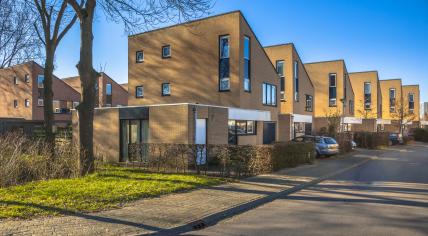
Dutch gov't planning more housing construction outside Randstad
The government is planning large-scale construction in six regions outside the Randstad in its ongoing fight against the housing shortage. Parts of Limburg, Gelderland, Twente, Noord-Brabant, and the northern provinces will be further densified and expanded, according to the plans outgoing Housing Minister Hugo de Jonge announced in a letter to parliament, AD reports.
De Jonge plans further densification of the “Brabant urban row,” which includes Breda, Tilburg, and Den Bosch. He wants more development of the Apeldoorn-Deventer-Zutphen triangle, the Twente region, and near intercity stations in Limburg. The Groningen-Assen region must be extended to Emmen, and Friesland cities must be urbanized further.
The outgoing government already planned to build around 980,000 new homes by 2030. But that won’t solve the housing shortage, and more large-scale housing construction will likely be needed after 2030, too, De Jonge said. “We have to take into account another 1 million homes after 2030,” he expects. Exactly how many new homes are needed will depend on population growth.
The Housing Minister said that the new government needs to take measures to prevent the Netherlands from growing too quickly. The Netherlands doesn’t have infinite space for building more homes, and much of the available space will be threatened by climate change in the coming years. The Randstad is already reaching its limits in many ways, he said.
Statistics Netherlands expects the Dutch population to grow from the current 17.9 million people to a possible 20.6 million in 2050. Early this year, a government policy adviser also recommended that the Netherlands aim for “moderate” population growth to between 19 and 20 million people in 2050. With these numbers, it should still be possible to guarantee sufficient access to housing, healthcare, education, and quality of life, the Staatscommissie Demografische Ontwikkelingen said.
